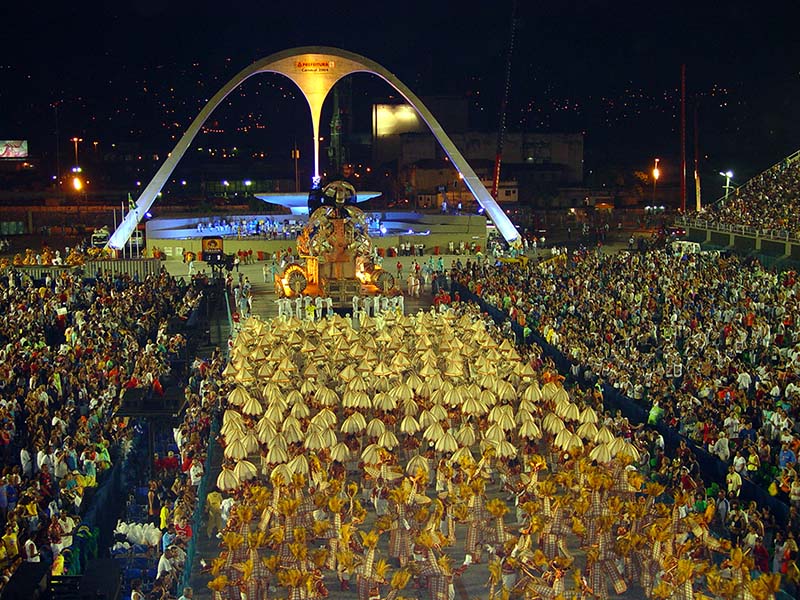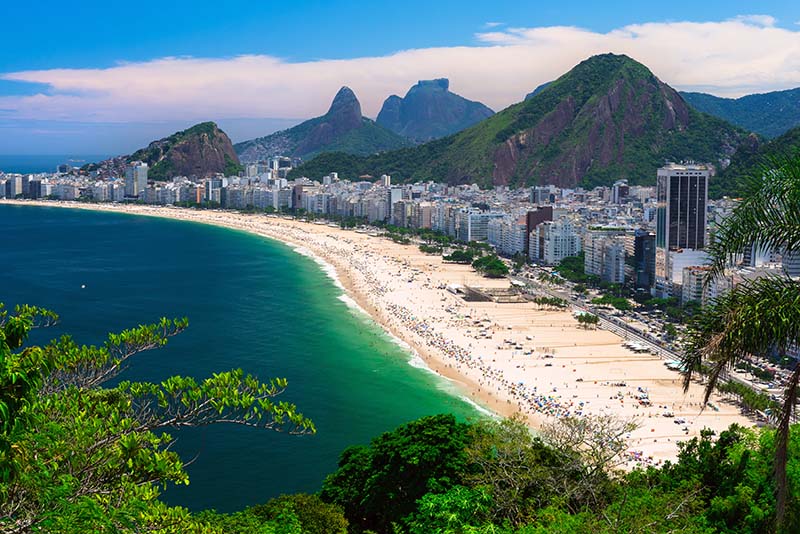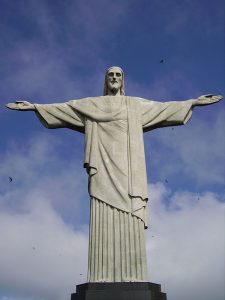Famed for its beaches, carnival, soccer
Rio de Janeiro is a huge seaside city in Brazil (population: 6.75 million) that was the capital until 1960 when Brasilia became the new capital.
Rio is one of the most visited cities in the Southern Hemisphere.
It is famed for the beaches, including Copacabana’s 2.5-mile stretch of sand, and the more upscale Ipanema Beach. Both are famed for girl watching.
The iconic symbol of Rio and Brazil is the 98-foot-tall Christ the Redeemer at the summit of Mount Corcovado. His outstretched arms span 92 feet. Most people take the 20-minute cog train through the Atlantic Forest to the top but the hardy can hike up to the top in about two hours.

Check on the weather before setting out. The statue is often in the clouds. The other must-do is Sugarloaf Mountain. Two cable cars rise to the 1,299-foot summit. Both offer amazing views.
Near the station of the Corcovado railway is Largo do Boticario, one of Rio’s most picturesque squares. It is surrounded by colonial-style houses. Check out the Jardim Botanico, a UNESCO biosphere reserve, with more than 8,000 species of plant life, plenty of birds and native animals. Not to miss is the Orchidarium, a green house filled with more than 2,000 species of orchards. The Japanese Garden has cherry trees and koi ponds.
Even though Rio is a pulsating city with nearly seven million people, the Tijuca National Park is one of the world’s largest parks within a city. To get to the park leave the cog wheel train midway to the top of Corcovado and follow the road through the forest. Most of the trees are native species and provide habitat for capuchin monkeys, quatis, toucans and other birds, along with many other species of wildlife.

The 2014 Summer Olympics put the world spotlight on the city. The Maracana Stadium was home to the opening and closing ceremonies. Soccer (called football in Brazil) fans might want to catch a game or take a brief tour of the stadium.
The National Museum of Brazil is housed in what was once the residence of the Portuguese royal family. It has one of the largest collections of natural history and anthropological artifacts in the world. The National Historical Museum is housed in what was once St. James of Mercy Fort dating back to 1603. Later the Calaboose Prison, the war arsenal, and barracks were added creating a large complex to hold nearly 300,000 items and 25 permanent exhibits.

There are some things that one should do at least once in their life and Rio’s carnival is one of them. Carnival is a multi-day event that signals the start of Lent. There are many events throughout Rio but the do-not miss event takes place in the Sambodrome, a purpose-built parade stadium. The 80,000 people in the stands yell and sing as each samba school parade passes through. The schools spend a year preparing music, costumes and floats. The characters on the floats dwarf the other people on the float. Each parade lasts 80 minutes and ends with fireworks. The fun lasts all night. Security is very tight with two key cards, one to get into the stadium and one to get in the section where one has pre-purchased tickets.
Americans only need a valid passport and can download an e-visa. Brazilian currency is called the real (BRL) but credit cards are widely accepted. The official language of Brazil is a dialect of Portuguese called Brazilian Portuguese. Rio is safe for tourists who travel smart: don’t flash money around, leave expensive jewelry home, and stick to tourist areas.
Featured Image: Overview of Rio de Janeiro, a city of nearly 7 million people in Brazil. Christ the Redeemer is on the left. Sugarloaf Mountain is on the right.


